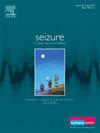确定澳大利亚与癫痫发作有关的入院热点
IF 2.7
3区 医学
Q2 CLINICAL NEUROLOGY
引用次数: 0
摘要
本研究旨在:(1)绘制澳大利亚癫痫相关住院的地理趋势图;(2)确定住院率的热点;(3)评估癫痫障碍专业服务获取的地理不平等。方法使用公开可获得的住院数据,包括2020-21年澳大利亚癫痫、癫痫持续状态和惊厥的诊断,计算标准化癫痫入院率(SR)。采用正向选择法确定空间回归模型协变量的最优子集。采用偏差信息准则和Watanabe-Akaike信息准则评价模型适应度。分层医院集水区地图和医院之间的关系是根据邻近程度和可获得的专业服务生成的。创建了一个基于web的应用程序来查看结果,其中包括一个搜索功能,以确定澳大利亚地址的医院等级(https://gntem3.shinyapps.io/epilepsyadmissions/)。结果虽然绝对住院人数较低,但北领地有3个地方政府区(LGA)的SR最高,如麦克唐奈LGA (SR 5.29, n = 50)。热点在区域和偏远地区更为常见,但也存在于城市地区(例如吉隆地区(SR 1.24))。表现最好的空间回归模型将肾脏疾病、癌症、糖尿病、精神健康状况和每10万人中家庭医生的数量作为显著协变量。结论癫痫相关住院的热点往往位于专业服务有限的地区,凸显了医疗服务的地域不平等。通过进一步模拟空间趋势和有针对性的资源分配来解决这些差异,对于改善癫痫发作障碍的公平医疗保健机会至关重要。本文章由计算机程序翻译,如有差异,请以英文原文为准。
Identifying hotspots of seizure-related hospital admissions in Australia
Background
This study aimed to: (1) map geographic trends of seizure-related hospitalizations across Australia, (2) identify hotspots in hospitalization rates, and (3) assess geographic inequities in access to specialized services for seizure disorders.
Methods
Standardized seizure admission ratios (SR) were calculated using publicly available hospital admissions data incorporating the diagnoses of epilepsy, status epilepticus and convulsions for the year 2020–21 in Australia. Forward selection was used to ascertain optimal subset of covariates for spatial regression models. Model fitness was evaluated using Deviance Information Criterion and Watanabe-Akaike Information Criterion. Tiered hospital catchment maps and relationships between hospitals were generated based on proximity and available specialized services. A web-based application was created to view results and includes a search function to identify tiers of hospitals for Australian addresses (https://gntem3.shinyapps.io/epilepsyadmissions/).
Results
Although the absolute number of hospitalizations was low, the Northern Territory had three local government areas (LGAs) with the highest SRs (e.g., MacDonnell LGA (SR 5.29, n = 50)). Hotspots were more frequently observed in regional and remote LGAs but were also present in urban areas (e.g., Geelong LGA (SR 1.24)). The bestperforming spatial regression model incorporated kidney disease, cancer, diabetes, mental health conditions, and the number of family physicians per 100,000 people as significant covariates.
Conclusion
Hotspots of seizure-related hospitalizations are often located in areas with limited access to specialized services, underscoring the geographic inequities in care delivery. Addressing these disparities through further modelling of spatial trends and targeted resource allocation is essential for improving equitable healthcare access for seizure disorders.
求助全文
通过发布文献求助,成功后即可免费获取论文全文。
去求助
来源期刊

Seizure-European Journal of Epilepsy
医学-临床神经学
CiteScore
5.60
自引率
6.70%
发文量
231
审稿时长
34 days
期刊介绍:
Seizure - European Journal of Epilepsy is an international journal owned by Epilepsy Action (the largest member led epilepsy organisation in the UK). It provides a forum for papers on all topics related to epilepsy and seizure disorders.
 求助内容:
求助内容: 应助结果提醒方式:
应助结果提醒方式:


